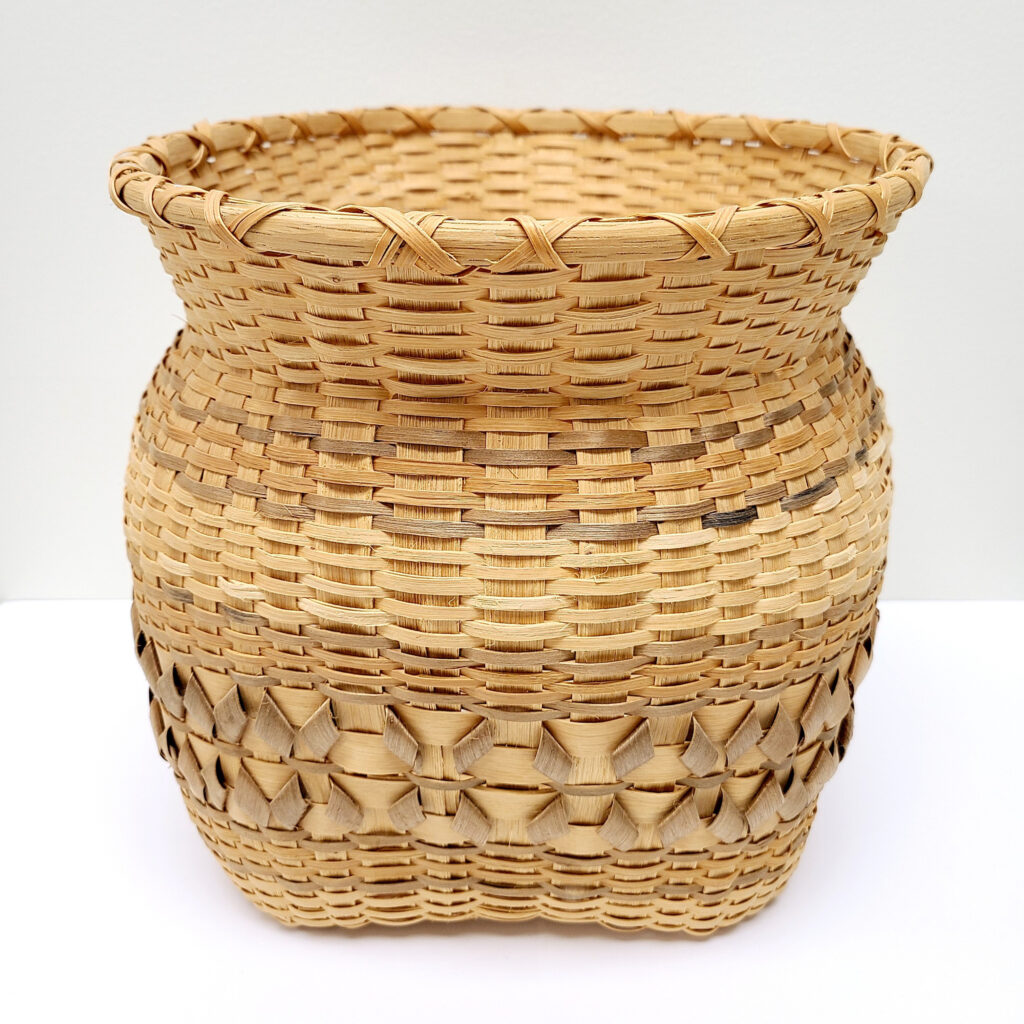Cherokee Basket

Basket weaving is an integral part of Cherokee culture with a tradition dating back almost 10,000 years. Baskets were historically used to harvest, store, and transport crops; catch fish; and even for games. They also served ceremonial purposes by protecting ritual tools and clothing while in storage. Baskets play a prominent role in Cherokee stories, such as Spider-Dwelling-In-The-Water who created a basket to bring fire to the people. The art of Cherokee basket weaving is passed down from mothers to daughters, forming a connection to traditional ways of life. Weaving patterns are similarly handed down, but each basket is unique.
This basket was made by Emma Squirrel Taylor (1920-2002), a master basket maker from the Eastern Band of Cherokee Indians. She produced baskets for more than fifty years. Taylor grew up in the Birdtown community of the Qualla Boundary and learned basket making at an early age by imitating her mother. Later, she had more formal training with master basket weaver Lottie Stamper. Taylor began selling her baskets for supplemental income while raising her eight children. She made a wide range of basket forms and won many awards for her work.
Taylor specialized in white oak baskets like this one, gathering and preparing the raw materials herself, until her age prevented her from doing so. After felling a tree and cutting it into sections, she removed the bark. Then she divided each section along the grain to make the splints. The splits were made smooth and workable by scraping them with a very sharp knife. After that process, she cut them to the necessary size for the basket. According to Taylor, each tree could produce four baskets.
Taylor also prepared her own dyes from materials she found in the forest. The grey color on this basket is from butternut tree bark, and the medium brown color is from hickory bark. The splints were boiled with these materials for four to five hours to create the color. According to her daughter, Taylor did not start a basket with a specific design in mind but developed it as she placed each splint.
